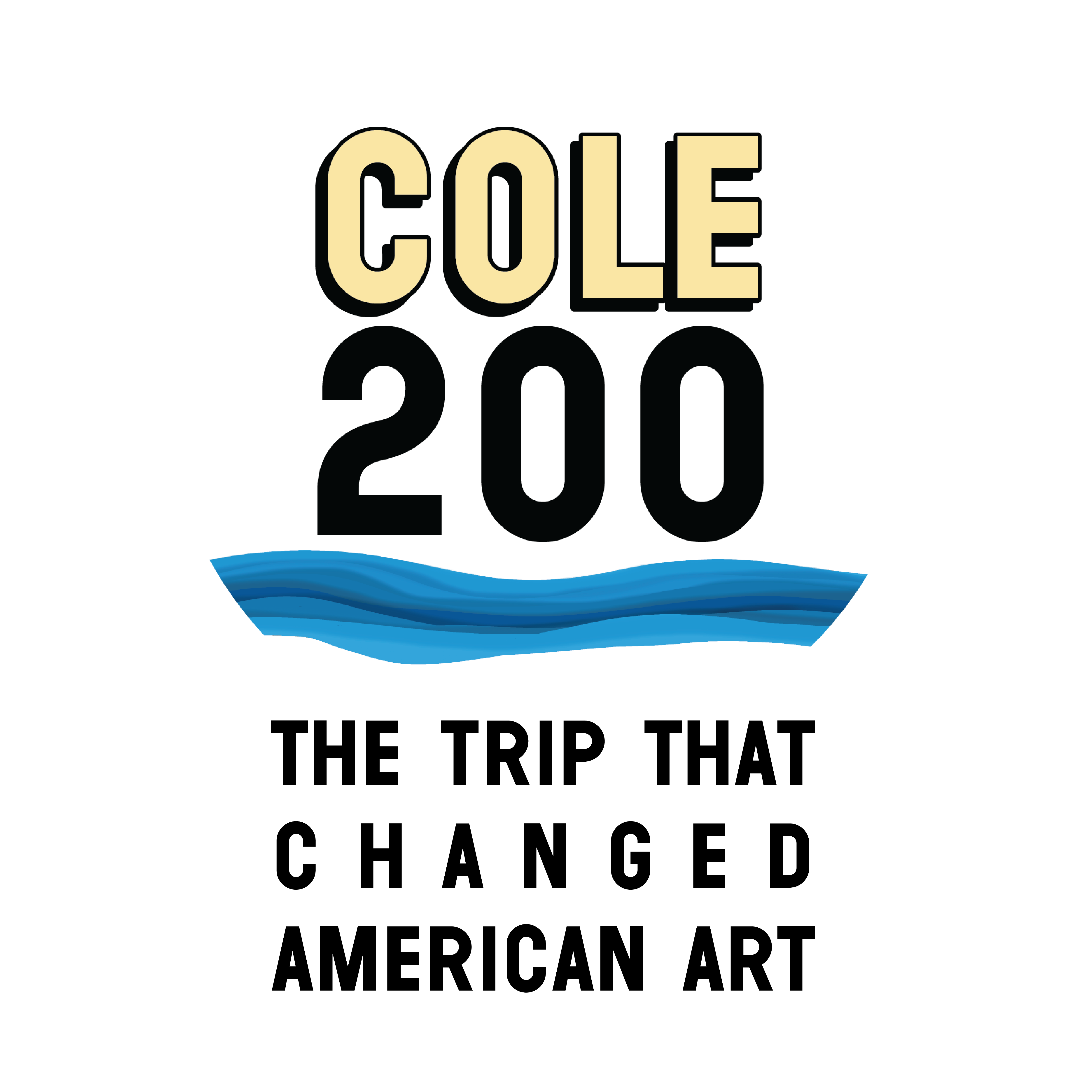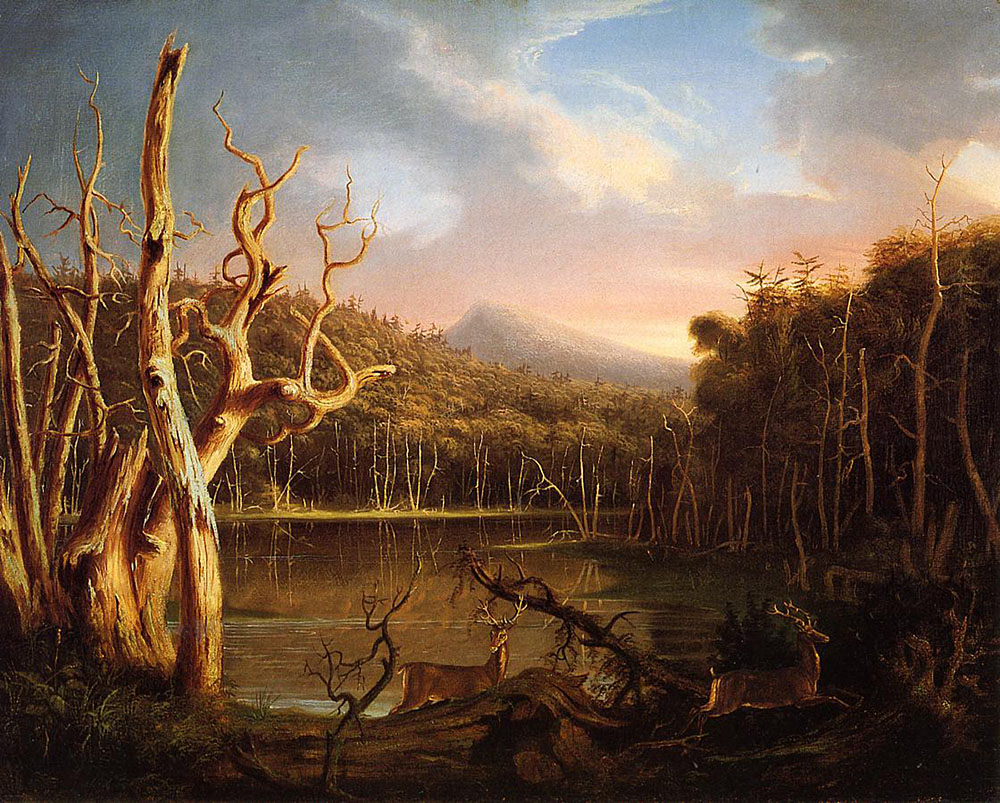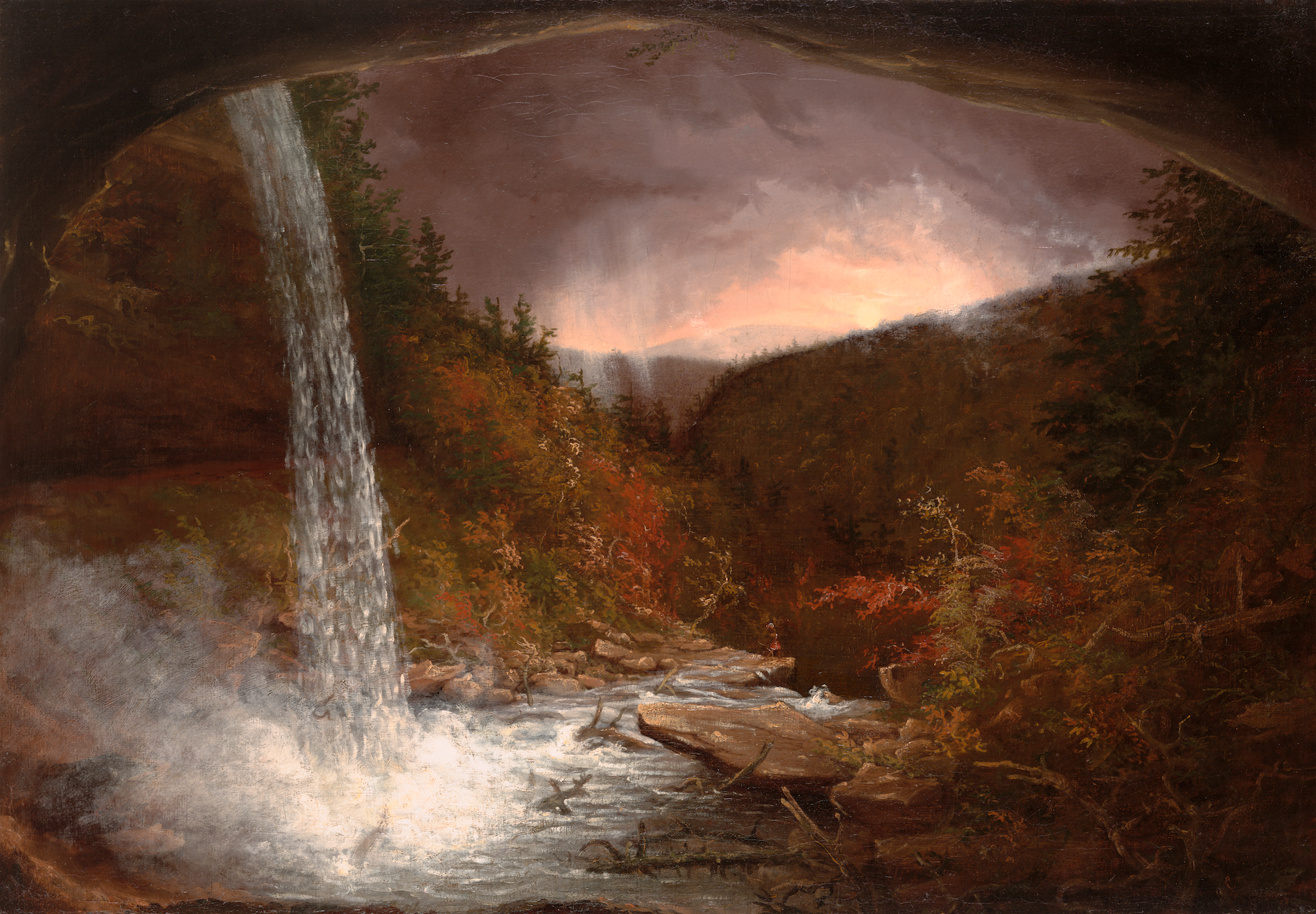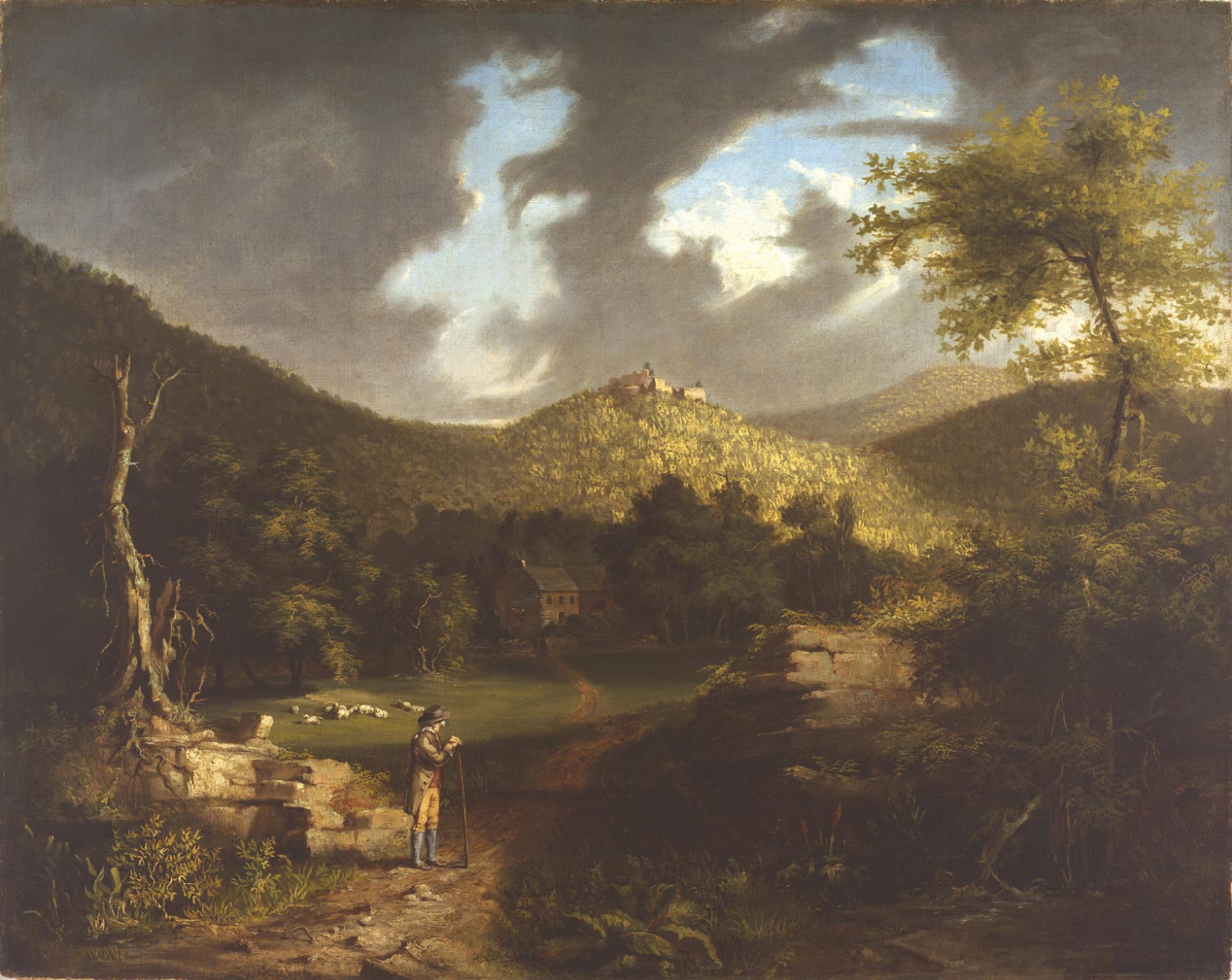
Summer 1825-2025
COLE 200
Thomas Cole’s first visit to Catskill is an event whose significance resonates through the history of American art to the present day.
—Tim Barringer, Paul Mellon Professor in the History of Art, Yale University
Cole’s first trip to the Catskills played a key role in shaping the trajectory of landscape painting in America. In his first painting of Kaaterskill Falls, the arch of the cavern frames the view, creating a literal and symbolic overture to reflect on how we connect with and revere the natural world.
Left: Thomas Cole, Lake with Dead Trees (Catskill), 1825, oil on canvas, 27 x 33 3/3 in., Allen Memorial Art Museum, Oberlin College, Ohio, Bequest of Charles F. and Abigail L. Olney, 1904.1183 | Center: Though the location of the original 1825 painting is unknown, a second version from 1826 is in the Wadsworth Collection: Thomas Cole, Kaaterskill Falls, 1826, oil on canvas, 25 1/4 x 35 1/4 in., Wadsworth Atheneum Museum of Art, Hartford, CT, Bequest of Daniel Wadsworth, 1848.15 | Right: Thomas Cole, View of Fort Putnam, 1825, oil on canvas, 27 1/4 x 34 in., Philadelphia Museum of Art, 125th Anniversary Aquisition, Gift of Charlene Sussel, 2018 | Cover: Hudson Talbott, detail from Picturing America: Thomas Cole and the Birth of American Art
COLE 200: Timeline
Summer 1825
Thomas Cole makes his first extended sketching trip up the Hudson River, visiting the Hudson Highlands, the Catskill Mountain House, Kaaterskill Falls, and the Village of Catskill. The trip inspires five paintings, including Falls of the Kaaterskill, View of Fort Putnam, and Lake with Dead Trees.
October-November 1825
Thomas Cole exhibits Falls of the Kaaterskill, View of Fort Putnam, and Lake with Dead Trees in the shop of New York picture dealer William A. Colman, where they are offered for sale at $25 each, the equivalent of $802 in 2025. The works attracted the attention of John Trumbull, known for his historical paintings of the American Revolutionary War, who purchases Falls of the Kaaterskilll. William Dunlap, a theater director and artist, purchases Lake with Dead Trees, and Asher Brown Durand, an engraver, purchases View of Fort Putnam.
November 14, 1825
In a letter to Robert Gilmore of Baltimore, Trumbull reports, “A young man of the name of T. Cole, has just made his appearance here…[he] has surprised us with landscapes of the most uncommon merit.”
November 16, 1825
The president of the New-York Drawing Association, Samuel F. B. Morse, proposes Thomas Cole as a candidate for membership. Two months later when the association is transformed into the National Academy of Design, Thomas Cole is elected a founding member.
November 22, 1825
The New York Evening Post likens the paintings to “those works which have been the boast of Europe and the admiration of the ages” and The New-York Literary Gazette introduces Thomas Cole to its readers as an “American genius.”
Research from Shannon Vittoria, “Chronology,” Thomas Cole’s Journey, 2018, The Metropolitan Museum of Art
COLE 200: Special Exhibition
ON TREES: Georgia O’Keeffe and Thomas Cole | Jun 21-Dec 14, 2025
The upcoming exhibition explores how Thomas Cole (1801–1848) depicted trees in the year of his transformational first visit to Catskill, NY in 1825 and how Georgia O’Keeffe (1887–1986) did so in her pivotal first visit to New Mexico in 1929.
COLE 200: 36 Hours Itinerary
Embark on Thomas Cole’s favorite trip. Take a weekend adventure to the home of American landscape painting on the 200th anniversary of the trip that changed American art forever. Including lodging, dining, and shopping tips.
COLE 200: Hudson River School Art Trail
Visit the sites in nature that inspired Thomas Cole’s iconic anniversary paintings.
COLE 200: Classroom Lesson Plan
Download a free Grades 6-12 Lesson Plan for teachers to use Thomas Cole’s anniversary paintings to teach American history curriculum.
COLE 200: Children’s E-Book
Access the free online children’s e-book, Picturing America: Thomas Cole and the Birth of American Art, for young readers by beloved children’s book author and illustrator Hudson Talbott. The online version is excerpted from the full print edition available in the museum shop.
COLE 200: Book Launch Event
Sunday Salon: “Picturing America” Book Talk & Signing with author Hudson Talbott | Sun, May 25
In celebration of COLE 200, join acclaimed author and illustrator Hudson Talbott for the re-launch of his book, Picturing America: Thomas Cole and the Birth of American Art, which brings to life Cole’s momentous first trip to Catskill.
The first edition was released by Penguin Random House in conjunction with the major international Thomas Cole show at The Metropolitan Museum of Art in New York City and the National Gallery in London. This second edition is published by the Thomas Cole National Historic Site and available exclusively at the museum shop.





